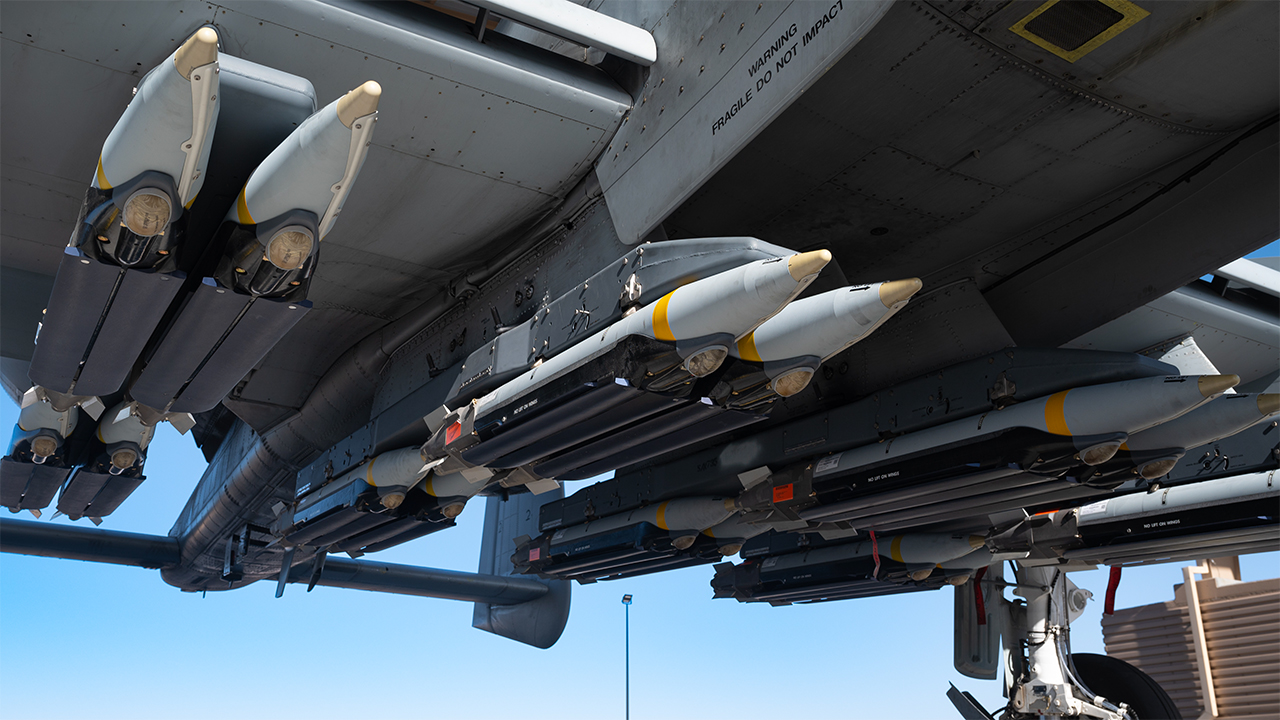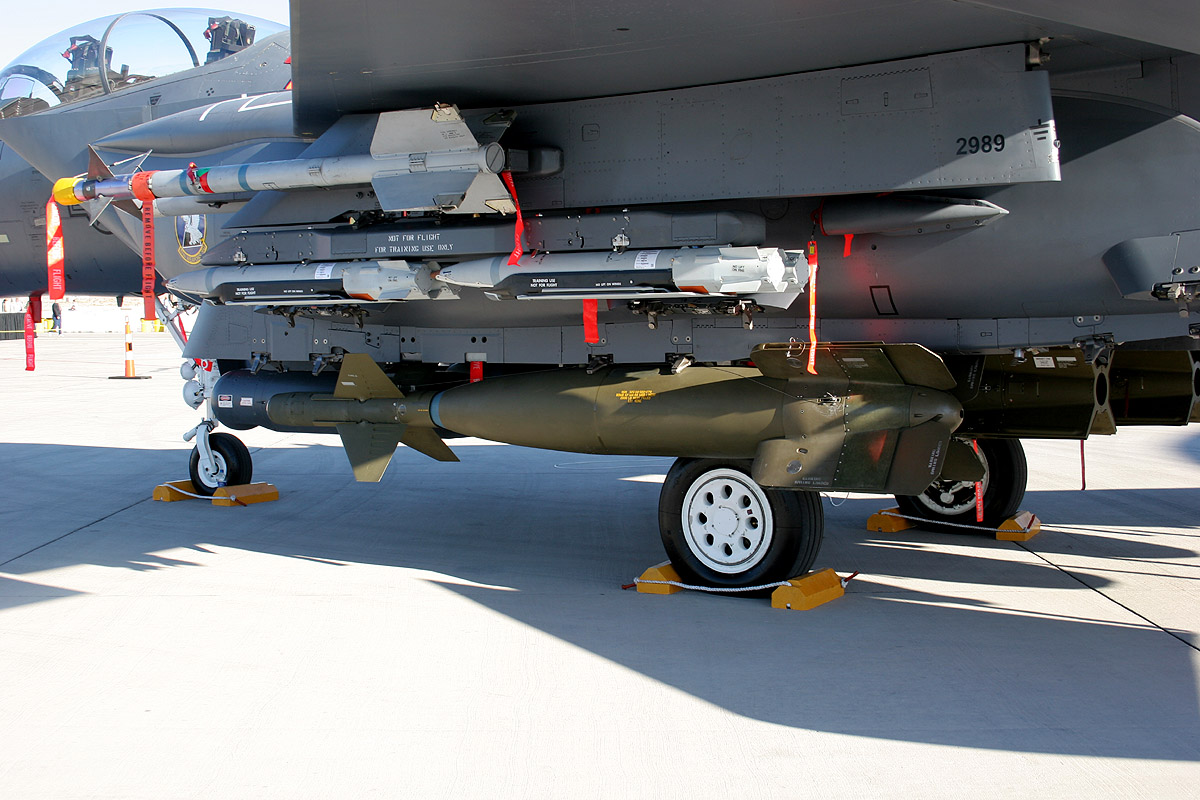
Recently, the Ukrainian Air Force showed new weapons – American GBU-39 small diameter precision-guided glide bombs, which, apparently, have already been dropped on the heads of the Russian invaders.
The history of these bombs begins in 1997, when the U.S. Air Force recognized the need for small precision bombs. This need was officially approved in 2001, and funding for their development was subsequently authorized.
The U.S. military had high requirements for future weapons: resistance to electronic warfare, the ability to strike moving targets, the possibility of autonomous and controlled use, and a high-precision inertial navigation system with a GPS receiver.
Giants like Boeing and Raytheon, each with different visions for a future bomb, entered the development race. The R&D process took two years, during which both companies developed design documentation: Raytheon for the GBU-53 and Boeing for the GBU-39.

In September 2003, Boeing became the main contractor of the program with its GBU-39. After the start of the competition, Darleen A. Druyun, then Principal Deputy Undersecretary of the Air Force for Acquisition, removed the requirement that the bomb be able to strike a moving target, giving Boeing preferential treatment. Druyun was later sentenced, in particular, for such violations.
The contract for the development of prototypes and the demonstration of the bomb was signed in October 2003. Production of demonstration samples began in 2005. By September 2006, the United States Air Force had received the first aerial bombs for service.
In October of the same year, the American Air Force conducted a combat use of GBU-39 from the F-15E Strike Eagle multi-role fighter.
In early September 2007, GBU-39 began testing on the F-22 Raptor after more than a year of intensive work integrating the bomb into the aircraft’s internal compartment.

Currently, the bomb is integrated on the Strike Eagle, Panavia Tornado, Gripen, Fighting Falcon, Raptor, Thunderbolt II, and even on the AC-130W.
Starting in 2010, the GBU-39 began to be actively exported abroad. Its operators are currently in Israel, the Netherlands, Australia, Italy, Saudi Arabia, South Korea, and Sweden.
In addition, the delivery of bombs is planned for Bahrain, Bulgaria, Morocco, Portugal, Turkey, and the United Arab Emirates.
GBU-39 is a 110-kilogram (250-pound) bomb 180 centimeters long. It has integrated “DiamondBack” type wings, which are placed on top. When suspended, the bomb wing is turned to the bottom. After separation, the wing opens and the bomb flips to its normal position.
At the bottom of the hull, there are two locks for attaching a bomb to BRU-61/A-type rack. Four GBU-39 can be placed on one rack.
The case tip is made of tungsten, which allows it to pierce concrete shelters. In the central part of the body, the warhead, the fuse programming unit and the fuse itself are alternately located.

The bomb has two main variants with different warheads: SDB I (GBU-39/B) and SDB FLM (GBU-39A/B).
There is also a variant of the GBU-39B/B laser-guided bomb, which began operation in 2015.
The central part of the bomb body houses the hardware, which includes a guidance unit consisting of an inertial system, at least three GPS receivers, an onboard computer, and an electronic warfare protection module.
The bomb’s electronics can be programmed in flight. The pilot inputs the coordinates of the target and chooses the type of explosion—air burst or contact. If contact detonation is selected, the warhead initiation delay can also be set.
Onboard navigation systems ensure that the bomb has a probable circular deviation of only one meter.
The tail part is situated behind the central part, and consists of an X-shaped tail with four rudders.
Subject to sufficient altitude and flight speed, GBU-39 in all variants can glide for a distance of up to 110 kilometers.
The GBU-39 is also a component of the GLSDB ammunition, which combines this bomb with a M26 rocket for use with the HIMARS. With the addition of a rocket motor and wings, the GLSDB achieves a range of 150-160 kilometers.
Recently, on May 25, 2024, Militarnyi, citing The Washington Post, reported that the Ukrainian Air Force had adapted Soviet combat aircraft for the use of American GBU-39 bombs, although the specific aircraft model was not disclosed.
Additionally, an image surfaced in the public domain showing an aircraft equipped with these aerial bombs mounted under the wing, but the type of aircraft could not be determined from the photo. An edited inscription dated May 12, 2024, was visible on one of the GBU-39 bombs.
While the exact aircraft type remains unknown, the weight of the bombs suggests potential compatibility with MiG-29 and Su-27 fighters, which have already been adapted for Western JDAM and HAMMER precision bombs.
The operational principle likely involves the aircraft acting as a “delivery vehicle,” dropping the bomb at designated coordinates with specified speed and altitude, with bomb programming conducted prior to takeoff.
Підтримати нас можна через:
Приват: 5169 3351 0164 7408
PayPal - paypal@mil.in.ua
Стати нашим патроном за лінком ⬇
Subscribe to our newsletter
or on ours Telegram
Thank you!!
You are subscribed to our newsletter